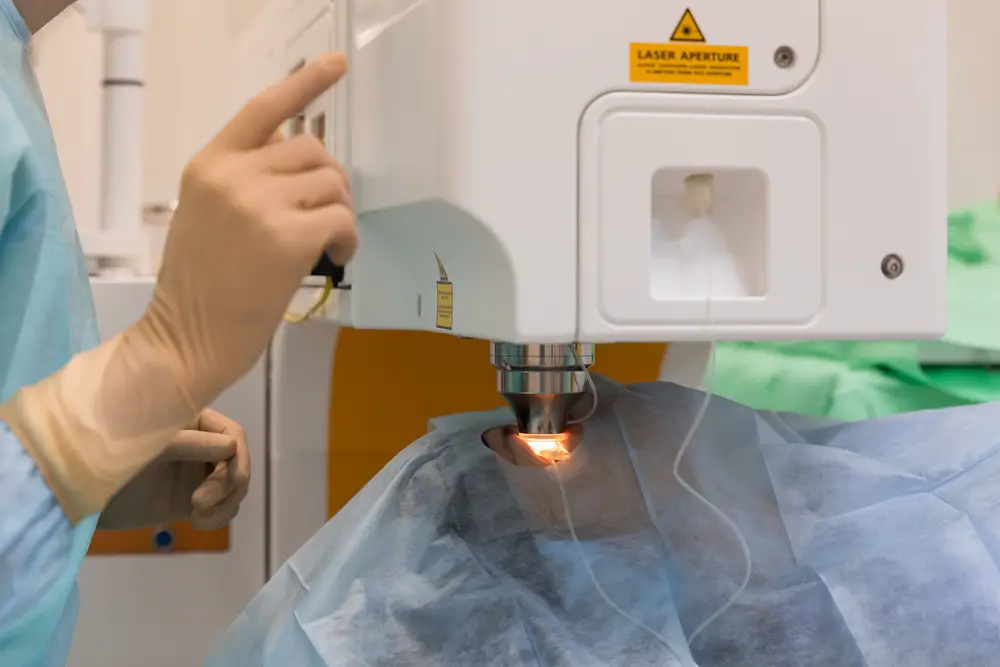
Laser applications have evolved over the years. Now, more than ever, the medical field has leaned on laser energy to treat a myriad of diseases, including COVID-19 symptoms. It might seem a bit off to use this much energy on human tissue. After all, laser light (short for light amplification by stimulated emission of radiation) can be intense enough to cut through steel. However, surgeons do not use as much energy and instead use what is necessary to treat the problem at hand.
Even so, they rely on the same premises as lasers. For example, lasers are highly effective when it comes to precision. Surgeons rely on this property when targeting specific organs or tissues in the body, ensuring they do not damage surrounding tissues, reducing the invasiveness of the procedure. While the patient may experience some scarring, swelling, and even pain, the after-effects are much less than traditional surgeries. For this and other reasons, laser treatment has fast become a popular option in the medical field.
Laser Therapy Applications

Laser treatment covers an array of conditions, key among them:
- Growths: Where a patient notices precancerous or even benign growths that they would like removed, lasers can help in either shrinking or destroying the same. From polyps to tumors, surgeons can target the affected area and put an end to the growth.
- Kidney Stones: While many patients hardly notice they have kidney stones and unknowingly pass them in their urine, some are not so lucky. The stones can be excruciatingly painful to pass, calling for a need for laser treatment. The surgeon focuses the beams on the stones, breaking them down and making their passing much more comfortable to the patient.
- Vision Problems: Patients with sight problems have registered overwhelming success by relying on laser treatments. Some have done it to repair their detached retinas, others have done so to treat their cataracts, while others have done so to be less dependent on their glasses or contact lenses. Often, the surgery is successful on the first try. However, one in ten patients usually has to have another surgery to ensure its success.
- Pain: High-power laser therapy has proven to decrease bradykinin, the chemical responsible for triggering pain. Additionally, it promotes the release of more endorphins and enkephalins to produce a calming and happy feeling in the patient. Some studies also show that laser treatment effectively widens blood vessels surrounding the injury, promoting more nutrient and oxygen flow to the affected area. It makes it easier for a patient to recover from trauma by reducing the inflammation.
- Hair Loss: Did you know that lasers can also aid people in treating hair loss owing to aging or alopecia? By irradiating photons into scalp tissues, the laser can stimulate hair growth. Compared to hair transplant surgery, laser treatment is less invasive and is effective in both men and women. A study done back in 2013 showed that over the next 16 weeks after treatment, the test group experienced about 39% more hair growth.
- Tissue Damage: As photons of light make their way into human tissue, they trigger more cellular growth and reproduction. It becomes much easier for cells in the affected area to be repaired, which is essential following trauma. Plus, laser therapy promotes the formation of new capillaries in the injured tissue, making it easier for wounds to close.
- Cancer: Hospitals rely on three types of lasers in the fight against cancer. These are argon, Nd:YAG, and CO2 lasers. CO2 and argon lasers effectively deal with what’s on the skin’s surface without affecting the underlying tissues and are often used for surface-level cancers such as skin cancer. However, for cancers of the internal organs such as colon cancer, Nd:YAG lasers are more effective. Their light can travel into tissues deep in the body.
With more laser treatments coming up, medical practitioners have leaned on optical components manufacturer for their expertise in developing laser components. Thus, patients can now look forward to less invasive yet highly effective ways to deal with underlying health problems.









